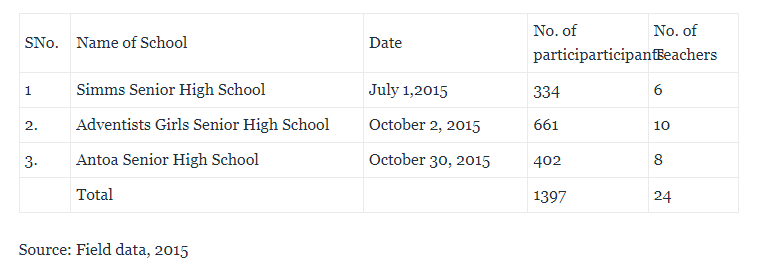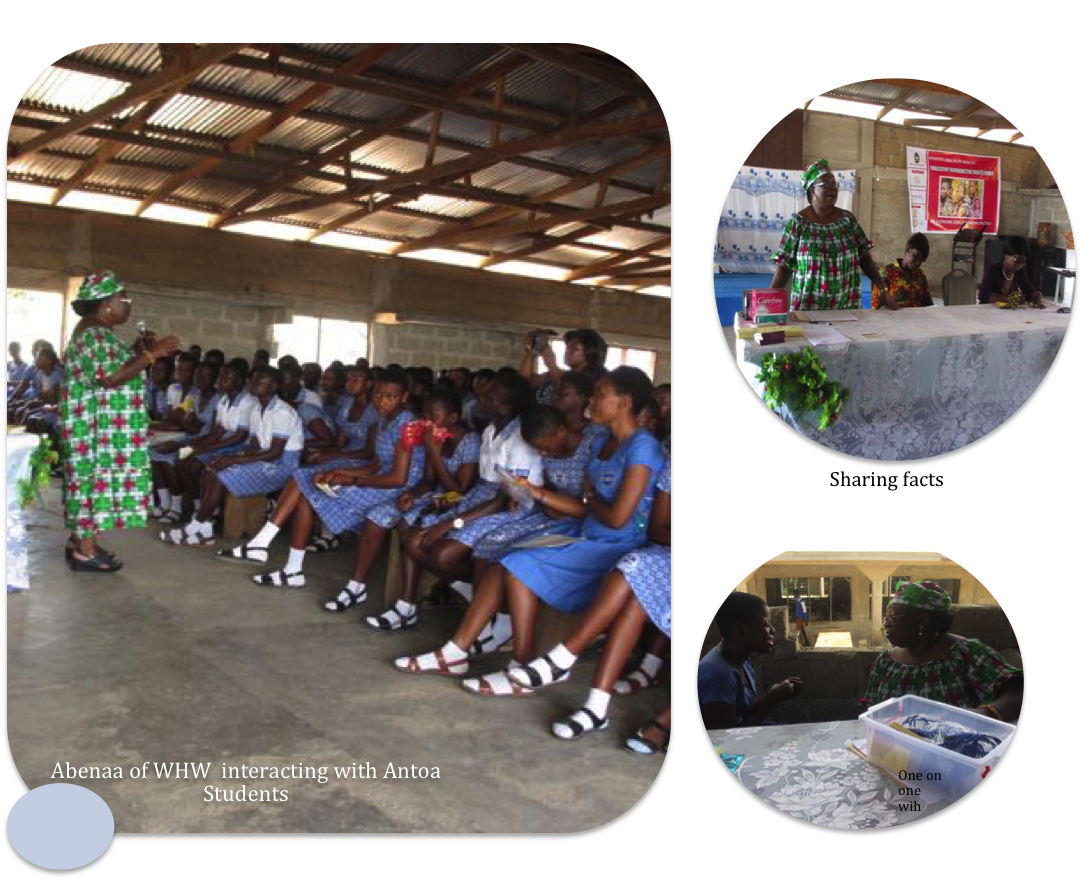Introduction
Sexual expression is an essential component of healthy human development (Freud, Maslow et al as cited by Zimbardo 1992). However when this expression happens in an unguided manner in young adolescents, the result is the high rates of pregnant teens and teen moms.The high and unacceptable rates of teenage pregnancy of 99 in 1000 live births in the region coupled with high rates of complications of unsafe abortions among girls in secondary institutions and the low completion rates of girls in second cycle institutions in the region prompted WHW to include the ARHF as one of its strategies to address this menace.
Objectives / purpose of the forum
WHW used this opportunity to- provide the adolescents with medically accurate sex education and information in school in an age appropriate manner,
- enhance adolescents access to family planning services in confidential manner to promote safer-sex practices in communities.
- identify girls who would be trained as peer educators for their schools to develop communication, negotiation and refusal skills
Participants
Between July and October 31, 2015, WHW organised three separate platforms for sexual reproductive health for girls aged between 15 and 19 years in three Senior High Schools in the Kwabre East district of the Ashanti region. The district is a focus district for WHW programs and also noted to be a district with a high prevalence of teenage pregnancies and high school drop out rates for girls in both Junior and Senior high schools.Facilitators and Collaborators
The nurses and nutritionists from the Ghana Health Service, the adolescent programme officer from Marie Stopes International and the district officer in-charge of girl child education in the district assisted WHW.
Find below the schedule and numbers of girls who attended each session.
 A total of 1397 students and 24 teachers in three schools attended the three sessions that covered a total of 11 hours. The highest attendance was recorded at the Adventist Girls Senior High School and the least at Simms Senior High School. However the observations and findings were similar in all the schools visited.
A total of 1397 students and 24 teachers in three schools attended the three sessions that covered a total of 11 hours. The highest attendance was recorded at the Adventist Girls Senior High School and the least at Simms Senior High School. However the observations and findings were similar in all the schools visited.
The forum provided medically accurate and appropriate information on adolescent reproductive issues such as menstruation, teenage pregnancy, contraception, unsafe abortion, anaemia, nutrition and mental health the global to the local setting.
The girls were given the opportunity to pose questions to the panel. The questions covered a variety of topics from menstruation, sex and sexually transmitted infections (STI), through contraceptives to the issue of sexual abuse by some guardians.
Several students also interacted with members of the panel on a one-on-one basis after the forum to seek guidance on highly personal issues. Girls with STIs in Simms and Adventist Girls Senior High School were referred to the Marie Stopes centre for management. In Antoa Senior High School , WHW organised a medical outreach session a week later to attend to 57 girls who had STI.

Observations and Findings
- All the three schools which are boarding institutions had no infirmary or school nurses on their compound to attend to girls when they have a health problem or handle medical emergencies
- Majority of the girls had been given some amount of adolescent reproductive health knowledge from their female teachers and they had no problems talking about condoms
- Majority of the questions posed to the panel were related to sex and sexually transmitted infections, family planning andcontraception issues, and less than 10 per cent each related to menstrual and nutrition issues
- The panel gave very brief but concrete responses to questions asked by girls
- A large number of the girls had reproductive infections for which they required medical treatment they wanted to discuss with the panel after the programme.
- In two schools, the female teachers expressed a lot of concern about how some of the male teachers were having sexual intercourse with the girls and requested assistance to deal with the problem.
- The medical outreach conducted in one school a week later revealed that, of the 54 girls who turned up with complaints,
- Only 3 had never had sexual intercourse as the vaginal examination and verbal interview confirmed the finding
- 2 had positive pregnancy tests
- 2 already had a child at home
- 3 had symptoms suggestive of pelvic inflammatory disease 5 had cervicitis
- 47 had mixed vaginal infections with main organisms being Trichomonas, candidiasis and bacteria vaginosis.
- 28 had already had at least one termination of an unwanted pregnancy.
- Two had normal vaginal pH with no infections
- None of them used a contraceptive during the last sex encounter they had.